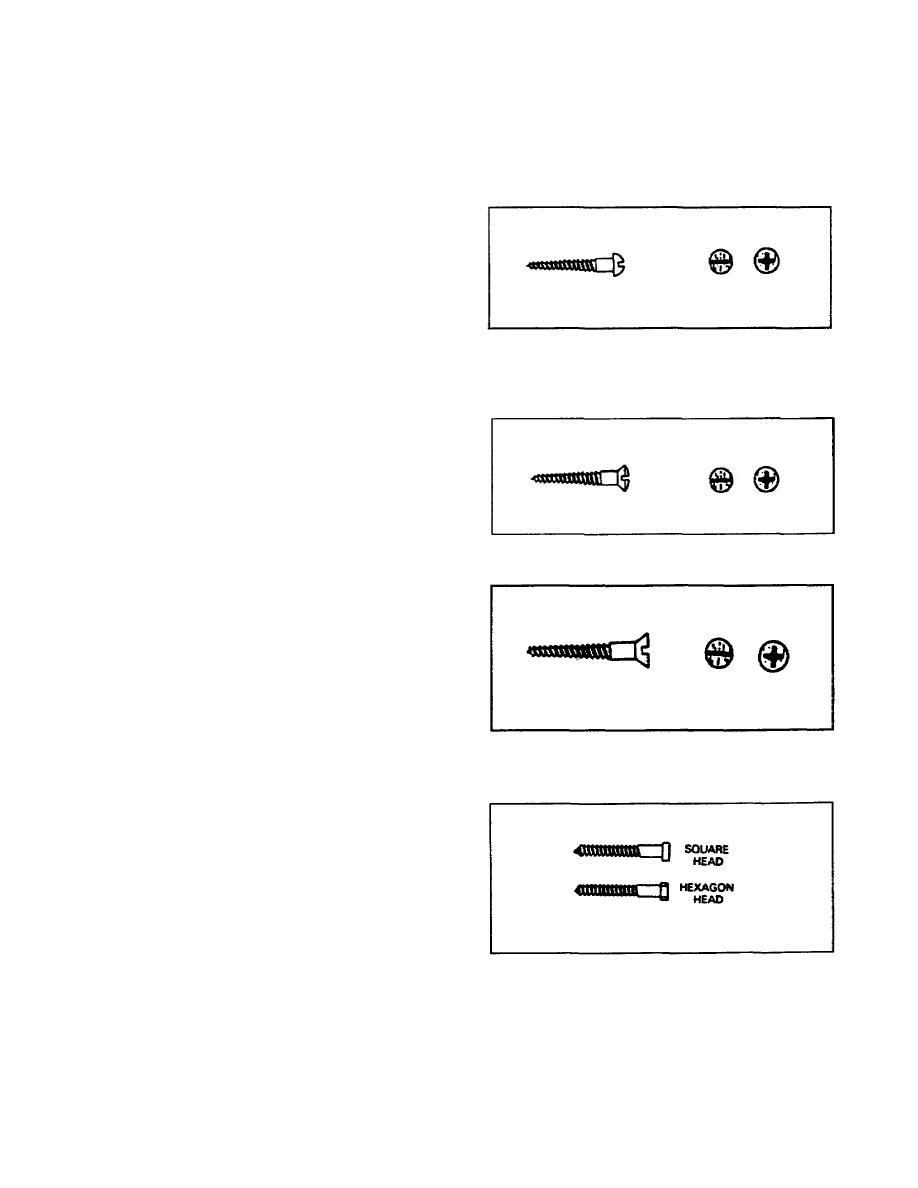
b. Wood Screws. Wood screws are made of iron, bronze, brass,
copper, or other metals; however, some are coated with nickel or
chrome to match specialfinish hardware. The main types of wood
screws are roundhead, oval head, and flathead, which can be either
slotted or Phillips head.
(1) Roundhead
Screws.
Roundhead screws (Figure 134)
are usually used on a surface
where the heads will show. The
head is not countersunk, and for
this reason it should have a
pleasing finisheither blued or
polished. If slottedhead, the
Figure 1-34.
Roundhead screw
screw slot should always be left
in a parallel position to the
grain of the wood.
(2) Ovalhead
Screws.
Ovalhead screws (Figure 135)
are used to fasten hinges or
other finish hardware to wood.
If slottedhead, the screw slots
of these screws should be
parallel to each other for
Figure 1-35.
Ovalhead screw
better appearance.
(3) Flathead
Screws.
Flathead screws (Figure 136)
are used where the head will not
show. The head should be
countersunk until it is level
with or slightly below the
finished surface. If flathead
screws are used on an exposed
area, they should be countersunk
Figure 1-36.
Flathead screw
in a hole that can be plugged.
(4) Other Screws.
(a) Lag Screws. Lag
screws are longer and heavier
than the common wood screw and
have coarser threads. They have
square and hexagon heads (Figure
137). They are used when
ordinary wood screws would be
too short or too light and
spikes would not be strong
Figure 1-37.
Lag screws
enough.
1-35
EN5155


 Previous Page
Previous Page
